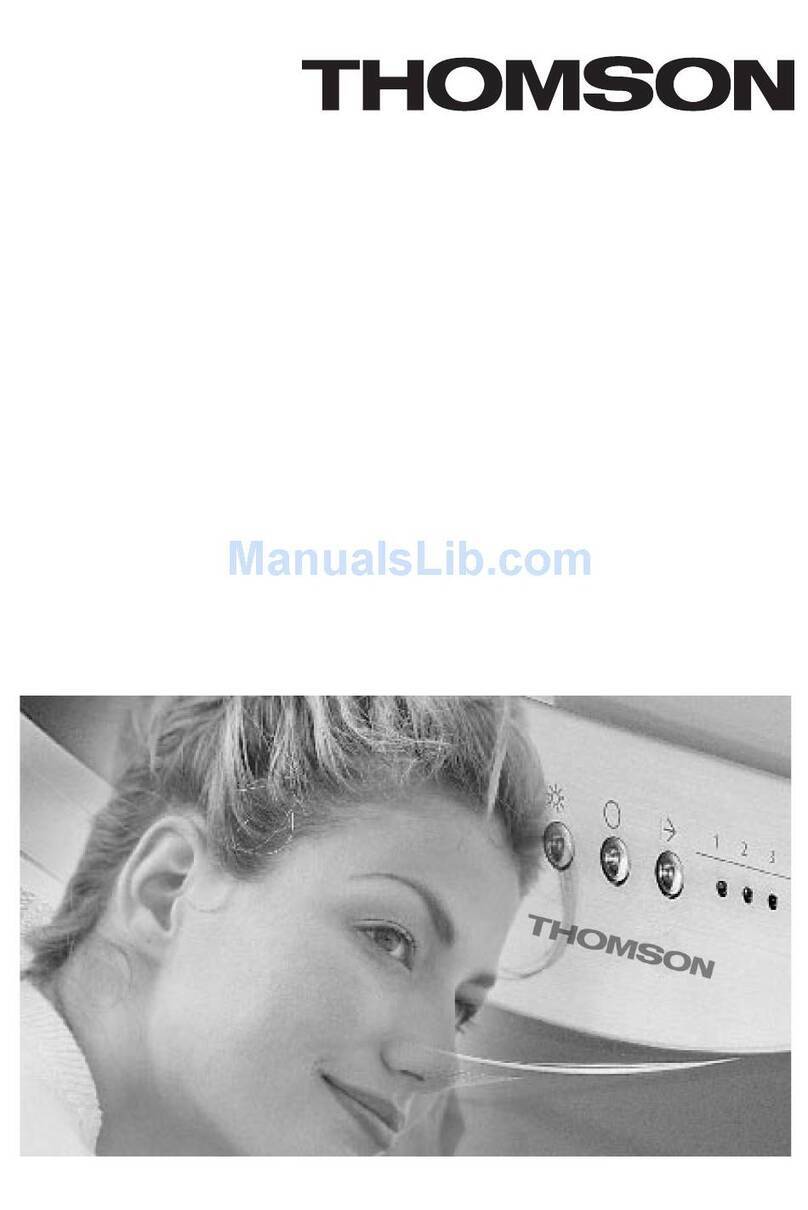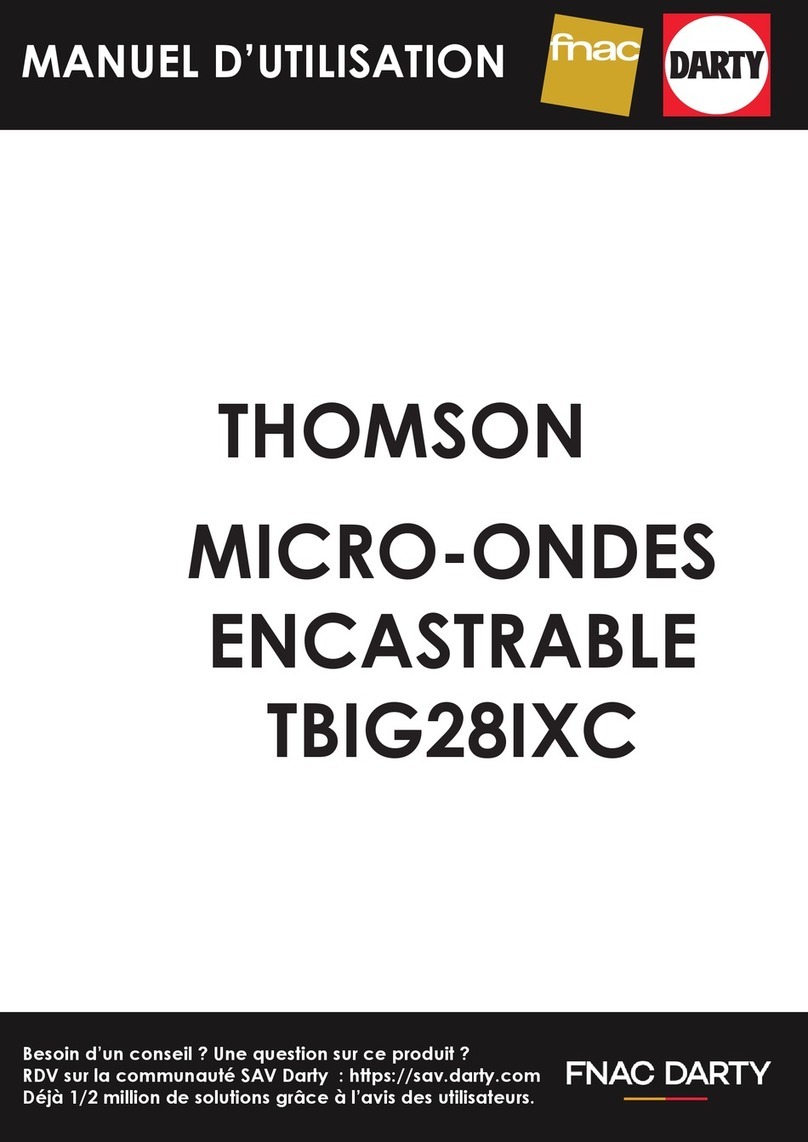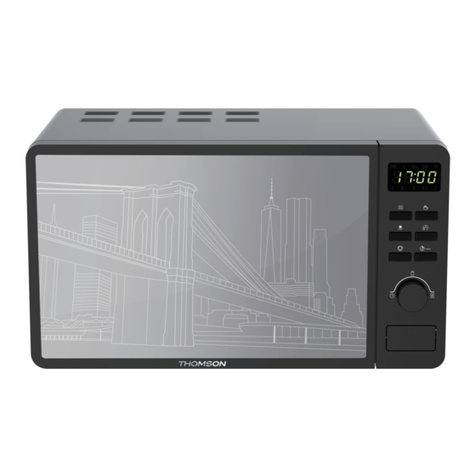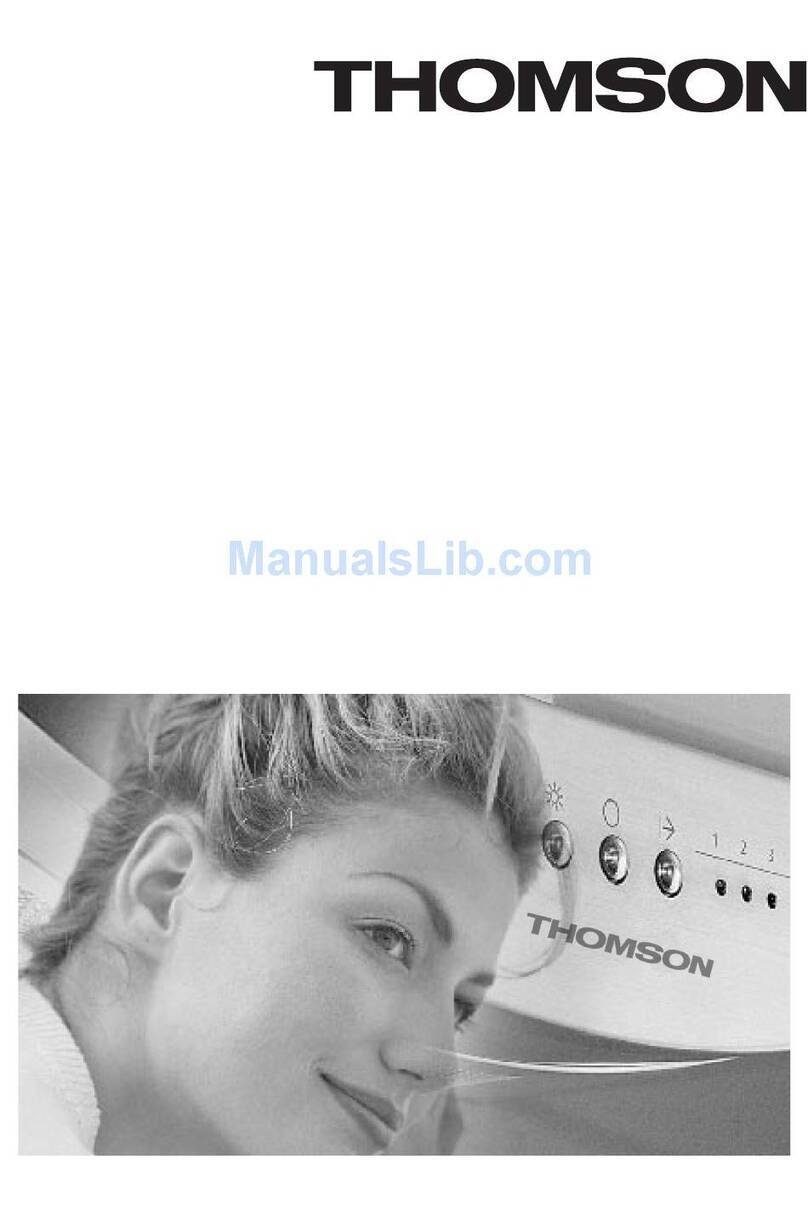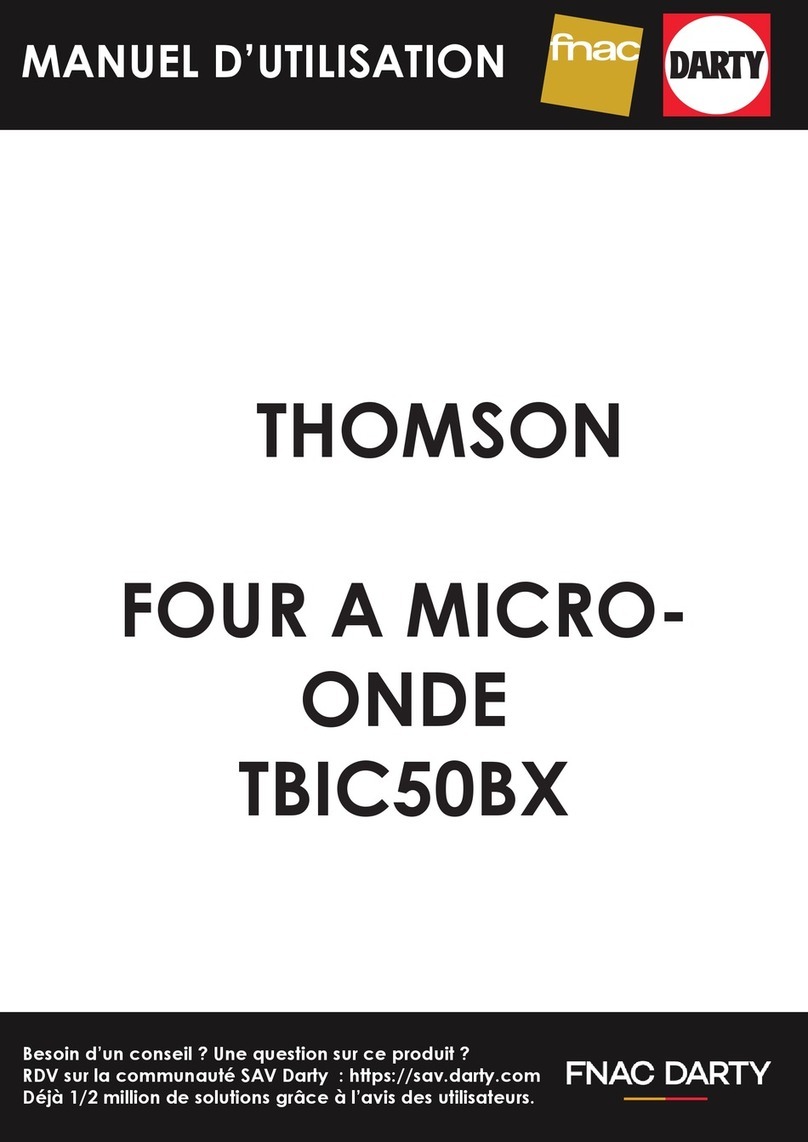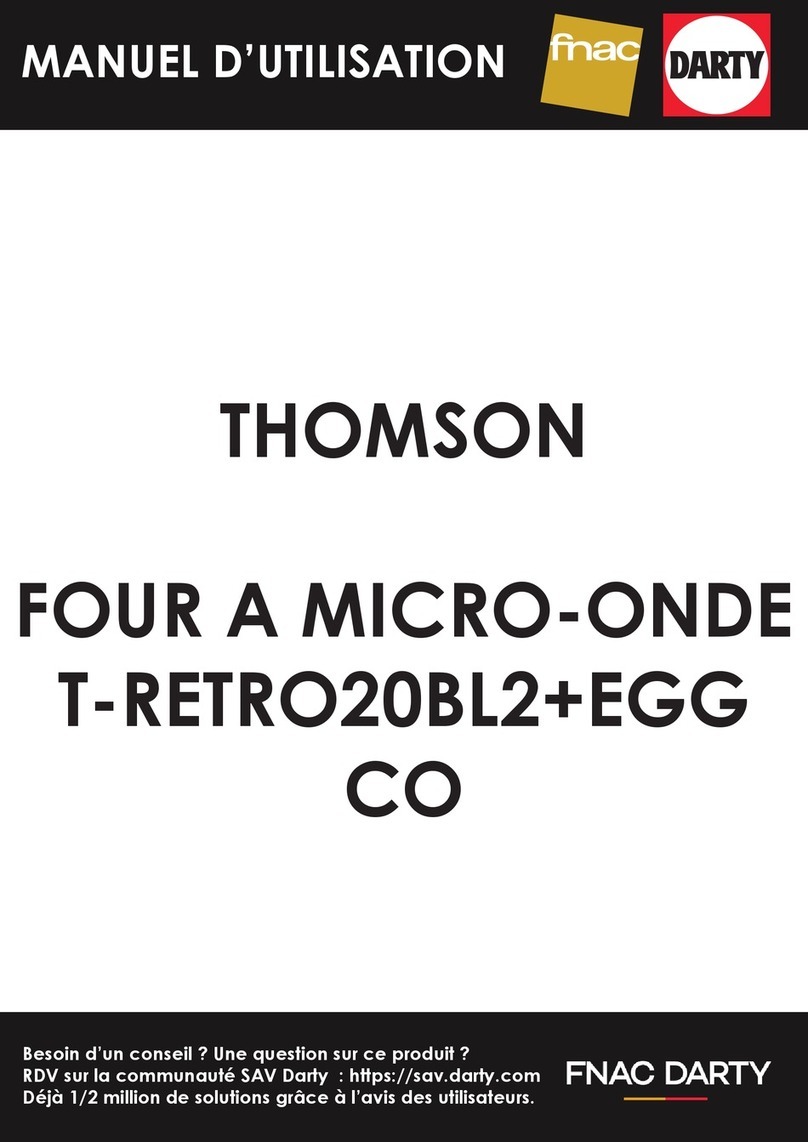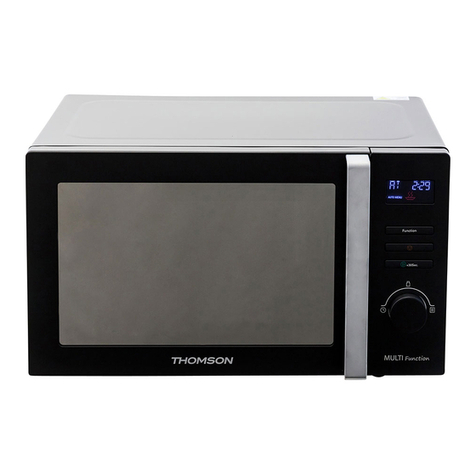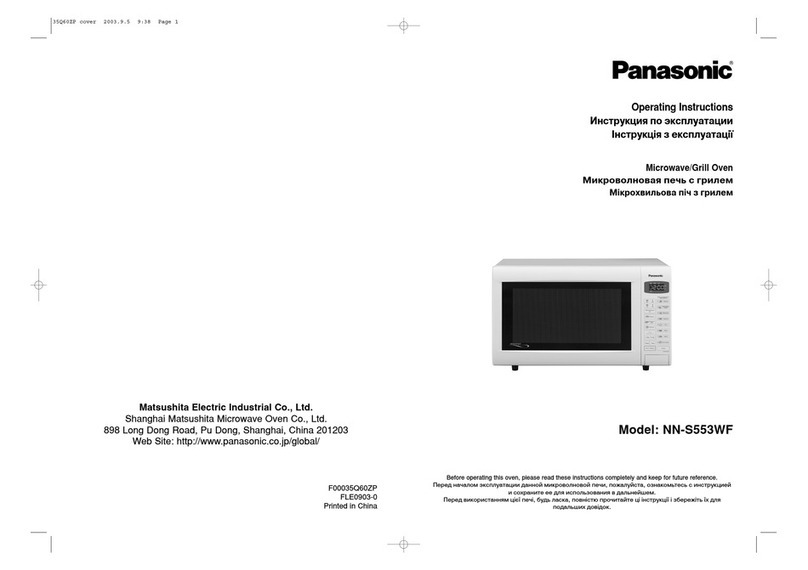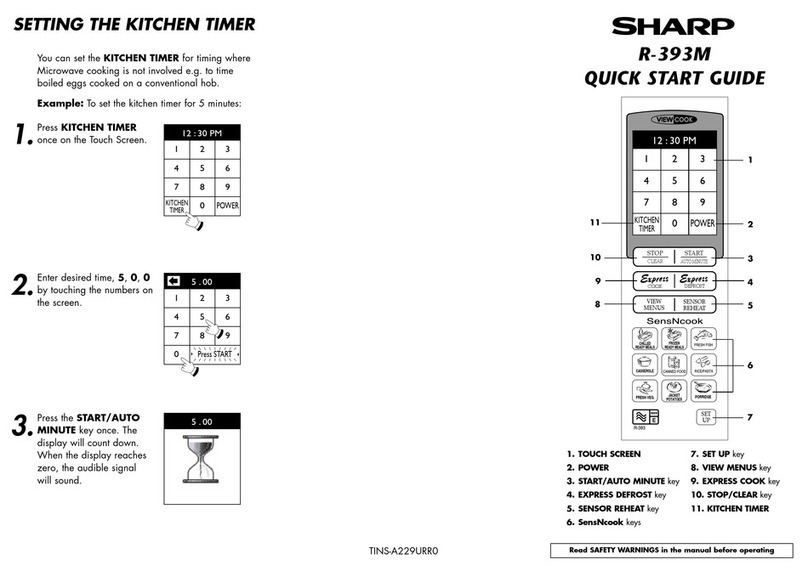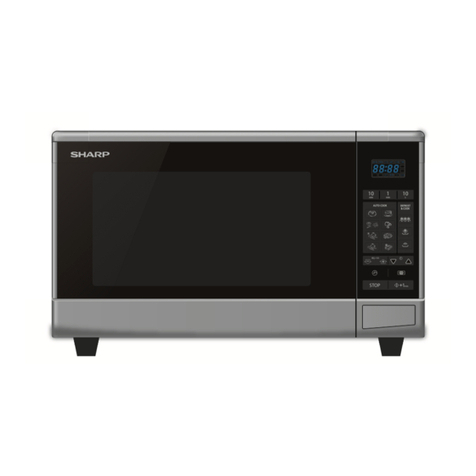
(1
xThe microwave oven cannot be operated with the door open due to the safety interlocks
built into the door mechanism which switch off the cooking functions when the door is
opened. Operating the microwave oven with the door open could result in harmful exposure
to microwave energy. It is important not to tamper with the door mechanism.
xDo not let water or any other liquid enter the oven through the ventilation slots.
xDo not place any object between the oven front face and the door or allow soil or cleaner
residue to accumulate on sealing surfaces.
xAvoid using straight‐sided containers with narrow necks.
xStir any liquid before placing the container back into the microwave oven half way through
the heating time.
xAfter heating, always allow standing time, stir or shake the contents and carefully check the
temperatures before consumption.
COOKING UTENSILS
Utensils should be checked to ensure that they are suitable for use in the microwave oven.
Materials you can use in microwave oven
Utensils Remarks
Browning dish Follow manufacturer’s instructions. The bottom of browning dish must be at least 5mm
above the turntable. Incorrect usage may cause the turntable to break.
Dinnerware Microwave-safe only. Follow manufacturer’s instructions. Do not use cracked or chipped
dishes.
Glass jars Always remove lid. Use only to heat food until it’s warm.
Most glass jars are not heat resistant and may break.
Glassware Heat-resistant oven glassware only. Make sure there is no metallic trim. Do not use cracked
or chipped dishes.
Oven cooking bags Follow manufacturer’s instructions. Do not close with metal tie. Make slits to allow steam to
escape.
Paper plates and cups Use for short-term cooking/warming only. Do not leave oven unattended while cooking.
Paper towels Use to cover food for reheating and absorbing fat. Use with supervision for a short-term
cooking only.
Parchment paper Use as a cover to prevent splattering or a wrap for steaming.
Plastic
Microwave-safe only. Follow the manufacturer’s instructions. Should be labelled
“Microwave Safe”. Some plastic containers soften, as the food inside gets hot. “Boiling
bags” and tightly closed plastic bags should be slit, pierced or vented as directed by
package.
Plastic wrap Microwave-safe only. Use to cover food during cooking to retain moisture. Do not allow
plastic wrap to touch food.
Thermometers Microwave-safe only (meat and candy thermometers).
Wax paper Use as a cover to prevent splattering and retain moisture.
3
